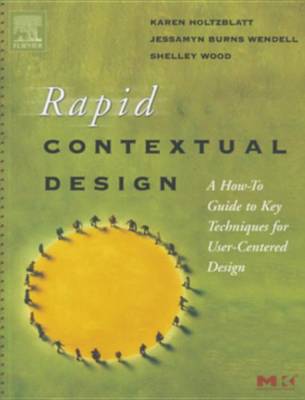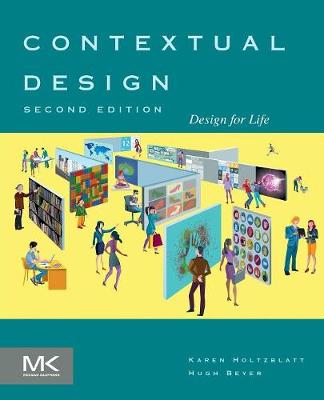Interactive Technologies
2 total works
Rapid Contextual Design
by Karen Holtzblatt, Jessamyn Burns Wendell, and Shelley Wood
Published 17 December 2004
Is it impossible to schedule enough time to include users in your design process? Is it difficult to incorporate elaborate user-centered design techniques into your own standard design practices? Do the resources needed seem overwhelming?
This handbook introduces Rapid CD, a fast-paced, adaptive form of Contextual Design. Rapid CD is a hands-on guide for anyone who needs practical guidance on how to use the Contextual Design process and adapt it to tactical projects with tight timelines and resources.
Rapid Contextual Design provides detailed suggestions on structuring the project and customer interviews, conducting interviews, and running interpretation sessions. The handbook walks you step-by-step through organizing the data so you can see your key issues, along with visioning new solutions, storyboarding to work out the details, and paper prototype interviewing to iterate the design-all with as little as a two-person team with only a few weeks to spare!
This handbook introduces Rapid CD, a fast-paced, adaptive form of Contextual Design. Rapid CD is a hands-on guide for anyone who needs practical guidance on how to use the Contextual Design process and adapt it to tactical projects with tight timelines and resources.
Rapid Contextual Design provides detailed suggestions on structuring the project and customer interviews, conducting interviews, and running interpretation sessions. The handbook walks you step-by-step through organizing the data so you can see your key issues, along with visioning new solutions, storyboarding to work out the details, and paper prototype interviewing to iterate the design-all with as little as a two-person team with only a few weeks to spare!
Contextual Design: Design for Life, Second Edition, describes the core techniques needed to deliberately produce a compelling user experience. Contextual design was first invented in 1988 to drive a deep understanding of the user into the design process. It has been used in a wide variety of industries and taught in universities all over the world. Until now, the basic CD approach has needed little revision, but with the wide adoption of handheld devices, especially smartphones, the way technology is integrated into people’s lives has fundamentally changed. Contextual Design V2.0 introduces both the classic CD techniques and the new techniques needed to "design for life", fulfilling core human motives while supporting activities.
This completely updated and revised edition is written in a clear, informal style without excessive jargon, and is the must-have book for any UX Design library. Users will find coverage of mobile devices and consumer and business products, all illustrated with new examples, case studies, and discussions on how to use CD with the agile development and other project requirements methods.
This completely updated and revised edition is written in a clear, informal style without excessive jargon, and is the must-have book for any UX Design library. Users will find coverage of mobile devices and consumer and business products, all illustrated with new examples, case studies, and discussions on how to use CD with the agile development and other project requirements methods.

